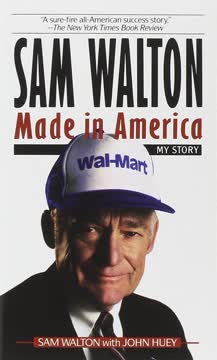Key Takeaways
1. Time is the New Competitive Weapon
Today’s innovation is time-based competition.
A new competitive age. In the dynamic global market, competitive advantages have life cycles. The latest and most powerful innovation is time-based competition, where companies prioritize speed and responsiveness alongside cost and quality. This shift is fundamentally reshaping industries.
Running circles. Time-based competitors offer greater product variety at lower costs and in less time than their slower rivals. By focusing on responsiveness, these companies are achieving remarkable results, often growing significantly faster and being substantially more profitable than industry averages.
Beyond traditional metrics. While cost and quality remain important, demanding executives at aggressive companies are adding responsiveness as a core performance measure. Giving customers what they want, when they want it, is enabling early innovators to dominate profitable market segments.
2. Time Compression Improves Everything
As time is compressed, the following changes occur: Productivity increases, Prices can be increased, Risks are reduced, Share is increased.
Multifaceted benefits. Reducing the time it takes to deliver value to customers has a cascading positive effect across the entire business. It's not just about speed; it fundamentally improves efficiency and effectiveness.
Tangible improvements:
- Productivity: Halving cycle times can increase labor and asset productivity by 20-70%.
- Costs: Reduced time in processes eliminates waste, leading to significant cost reductions (often 20-30%).
- Quality: Faster cycles mean problems are discovered and fixed sooner, improving first-time yield.
- Risk: Shorter lead times reduce forecasting error, lowering costs associated with over/under-forecasting.
- Prices: Customers are willing to pay premiums (20-100%) for faster, more reliable service.
- Share: Improved responsiveness attracts customers and increases market share.
A powerful lever. Time acts as a powerful lever, amplifying other competitive advantages. Companies that master time compression find that improvements in speed naturally lead to improvements in cost, quality, and market position.
3. Customers Pay a Premium for Speed and Variety
The true profit potential of being a time-based competitor can be realized when the improved cost efficiencies of being responsive are matched with the customers’ awareness of better service, their desire for choice, and their willingness to pay well for both.
Time elasticity of price. Customers value speed and choice, and this value translates directly into their willingness to pay higher prices. The less time a customer has to wait for a desired product or service, the less likely they are to shop around for a lower price.
Segmenting by sensitivity. Customers are not uniform in their needs; they can be segmented by their sensitivity to time and variety.
- Some prioritize price and are willing to wait or accept limited options.
- Others prioritize speed and choice and are willing to pay a premium.
Time-based competitors target these time-sensitive segments, which are often the most profitable.
Dependency and loyalty. By consistently providing what demanding customers want, when they want it, time-based competitors build strong customer loyalty and dependency. These customers are less likely to switch suppliers, even for lower prices, because the responsive supplier provides significant economic or subjective value.
4. Fast Innovation Cycles Drive Market Leadership
The only way to break this vicious cycle is to substantially reduce the time required to conceive, develop, and introduce new products and services.
Pace of change. Innovation is crucial, but the speed at which new ideas are brought to market is the critical factor. Industries have varying innovation paces, but within any industry, competitors can differ dramatically in their cycle times.
Escaping the vicious cycle. Companies with long development cycles are constantly playing catch-up. They are surprised by market changes or competitor moves, leading to delayed or irrelevant product launches and lost profits. Accelerating the innovation cycle is the only way to break free.
Incremental advantage. Fast innovators don't rely on rare, major breakthroughs. Instead, they focus on rapid, incremental improvements and frequent new product introductions. This allows them to:
- Experiment with the market and fine-tune offerings quickly.
- Stay current with technology and styling.
- Set the pace of innovation, leaving slower competitors behind.
- Gain leadership positions in about a decade.
5. Time Compression Delivers Superior Financial Performance
Growth rates of three times the average of their industry with two times the industry profit margins are exciting and achievable targets.
Direct impact on the bottom line. The benefits of time compression translate directly into superior financial results. Time-based competitors consistently outperform their industry averages.
Key financial indicators:
- Growth: Often grow at least three times faster than the industry average.
- Profitability: Achieve profit margins that are more than twice the industry average (e.g., pretax return on net assets often doubles or triples).
- Asset Productivity: Turn inventory and net assets significantly faster (e.g., 50% to 200% higher turns).
Competitive advantage. Higher asset productivity means time-based companies need less capital to support growth, allowing them to out-invest and outgrow slower competitors. The combination of higher prices, lower costs, and faster asset turns creates a powerful financial engine.
6. Redesign Organizations for Speed
A company only becomes time-based by developing superior insight into what customers value and by building the company around it.
Focus on deliverables. Traditional organizations are often structured around functions or departments. Time-based organizations, however, are designed around the "main sequence" of activities that directly deliver value to the customer.
Structuring work for speed:
- Main Sequence: Identify and isolate direct value-adding activities from support work, organizing them into a clear, continuous flow.
- Continuous Flow: Eliminate delays, queues, and rework between steps to reduce total cycle time and increase throughput capacity.
- Closed-Loop Teams: Empower small, cross-functional teams with all necessary resources and decision-making authority to manage a specific deliverable from start to finish, ensuring rapid observation, orientation, decision, and action (OODA loop).
Overcoming inertia. This requires fundamentally changing how work is structured, breaking down silos, and challenging established routines. It's a demanding process that requires strong leadership and persistence.
7. Information Flow Must Be Fast and Shared
Companies that win in business are those that keep generating new information about these concerns and share it with as many employees as possible.
The OODA Loop. Business competition, like a fighter pilot's dogfight, is a series of rapid cycles of Observation, Orientation, Decision, and Action. The competitor who completes this loop faster gains the advantage.
Accelerating the cycle. Time-based companies prioritize creating and sharing information quickly throughout the organization. They understand that information loses value as it ages, leading to costly delays and errors.
- Replace slow, batched information processing with fast, continuous flow.
- Use technology (like electronic data interchange) to link different parts of the organization and the supply chain.
- Foster a culture of spontaneous information sharing.
Empowering teams. Closed-loop teams are effective because they keep information and decision-making within the team, shortening feedback loops and enabling rapid response to changing conditions or problems.
8. Measure Performance by Time, Not Just Cost
Time is the best diagnostic measure and design parameter available.
Beyond financial metrics. While cost and financial results are important lagging indicators, time is a powerful leading indicator and diagnostic tool for operational health.
Time reveals problems. Measuring time forces analysis down to the physical level of operations.
- Elapsed time (lead time, cycle time) shows how long processes actually take.
- Uptime x Yield reveals hidden inefficiencies and quality problems in sequential processes.
- Time lost waiting for decisions highlights bottlenecks in information flow and authority structures.
Driving improvement. Focusing on time compression naturally leads to cost and quality improvements. Wasted time is often a symptom of underlying inefficiencies, rework, or poor process design. Attacking time directly uncovers and addresses these root causes.
9. Becoming Time-Based Requires Vision, Change, and Sustained Effort
The journey to becoming a time-based competitor is demanding. It begins with a vision of what could be.
Three phases. The transformation to a time-based organization is a multi-year journey involving distinct phases:
- Vision and Decision: Discovering the opportunity through internal analysis (mapping, metrics) and external benchmarking, building a compelling vision, and securing commitment from key leaders.
- Making the Change: Overcoming organizational barriers (management policies, employee fears) and engaging the organization to design and implement new, faster ways of working (pilots, breakthrough teams).
- Sustaining Improvement: Institutionalizing time-based practices, continuously monitoring performance, benchmarking, fostering rapid feedback loops, and maintaining momentum through growth and leadership.
Overcoming inertia. This transformation is challenging because it disrupts established routines, power structures, and beliefs. It requires persistent leadership, clear communication, and a willingness to challenge deeply ingrained habits.
10. Competing as a Time-Based Supply Chain
Today, creative producers are taking this a step further by making supply chains work even more closely with them.
Chain vs. Chain. Competition is increasingly between entire supply chains, not just individual companies. The performance of the whole chain, from raw material supplier to end customer, determines its collective competitiveness.
Disjointed chains. Traditional supply chains suffer from late, distorted, and amplified information flows (e.g., the "bullwhip effect"), leading to excessive inventories, high overheads, and long lead times at every level.
Supply chain leaders. Effective chain leaders (like Milliken or Ford) help their partners compress time by:
- Providing better, fresher information (e.g., sharing real-time demand data).
- Collapsing chain cycle times (e.g., eliminating duplicate buffer stocks, working in parallel).
- Synchronizing lead times and capacities across the chain's product mix.
Mutual benefit. By helping customers and suppliers compete more effectively, chain leaders improve the performance of the entire system, securing their own position within a more competitive and profitable chain.
11. Time-Based Strategy is an Indirect Attack
Time provides the means for indirect strategies of attack.
Beyond head-on. While direct attacks (e.g., price wars) are costly and risky, time-based capabilities enable powerful indirect attacks that often baffle competitors.
Strategies of surprise. Time-based competitors use speed and responsiveness to:
- Resegment the market by appealing to time-sensitive customers.
- Obsolete competitors' products or services with rapid innovation.
- Flank competitors by quickly drawing customers away with superior responsiveness and variety.
Baffling the competition. Cost-based competitors often fail to understand or effectively respond to time-based attacks. They may dismiss the time-based competitor as a niche player or believe their own cost advantage is sufficient. This delay in response allows the time-based competitor to build an insurmountable lead.
Sustainable advantage. By focusing on time, companies create a dynamic advantage that is difficult for slower, cost-focused rivals to replicate, leading to sustained growth and profitability.
Last updated:
Review Summary
Competing Against Time receives mixed reviews, with an average rating of 3.91/5. Readers appreciate its insights on time-based competition and strategic advantages, particularly in manufacturing. Many find the concepts still relevant today, despite the book's age. Some praise its comprehensive overview and historical context, while others critique its repetitiveness and outdated examples. Tim Cook's recommendation is noted by several reviewers. Critics mention the book's length, dense writing, and occasional tedium, suggesting more concise alternatives for modern readers.
Similar Books










Download PDF
Download EPUB
.epub digital book format is ideal for reading ebooks on phones, tablets, and e-readers.




